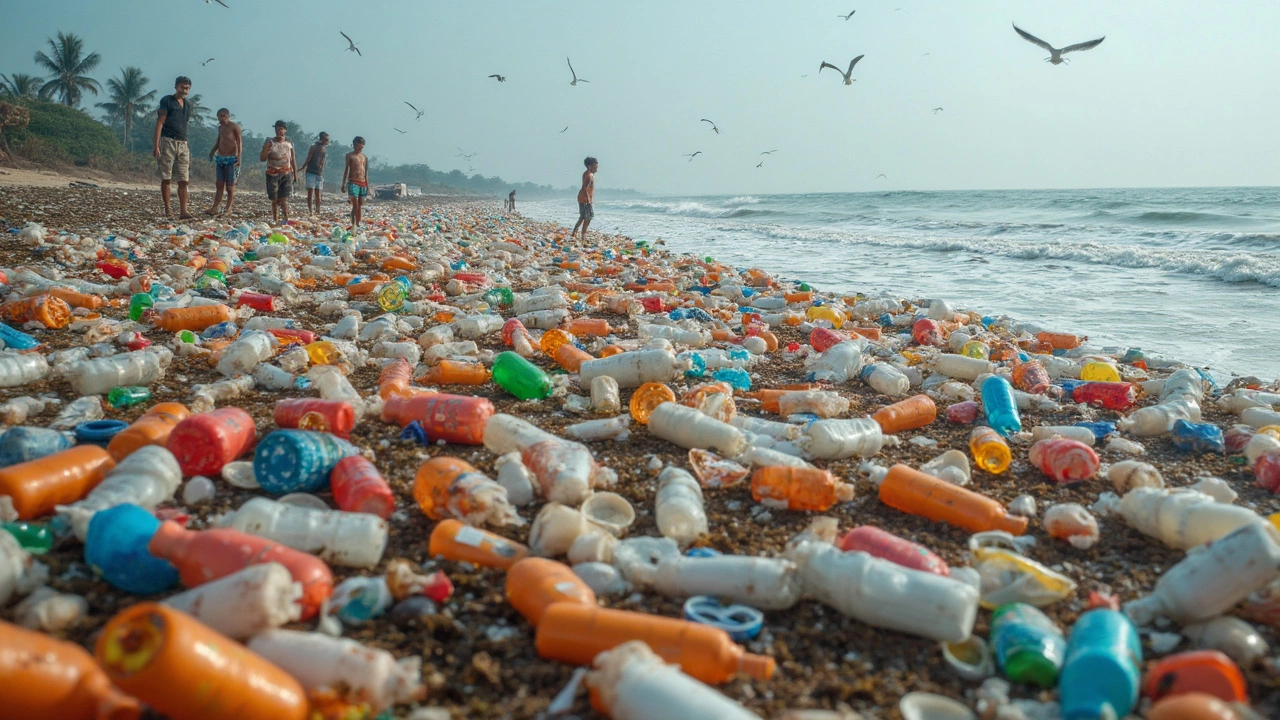Ocean Plastic Pollution Explained
When dealing with Ocean Plastic Pollution, the massive flow of plastic waste into the world’s oceans that harms marine life and ecosystems. Also known as marine plastic debris, it results from a mix of discarded packaging, fishing gear, and micro‑particles that end up far from shore. This problem isn’t isolated – it connects directly to how we produce and manage plastic on land.
The manufacturing side matters a lot. Plastic Manufacturing, the industrial process that turns resin into everyday items like bottles, bags, and construction components creates the bulk of the material that eventually becomes ocean waste. In the U.S., hubs such as Texas and California churn out millions of tons of resin and finished products each year, and similar clusters exist worldwide. When production outpaces recycling capacity, excess plastic often finds its way into rivers, then oceans, feeding the pollution cycle.
Effective waste handling can break that chain. Waste Management, the systems and policies that collect, sort, recycle, or properly dispose of solid waste determines how much plastic escapes into the environment. Cities with robust recycling programs and extended producer responsibility rules see lower leakage rates. Conversely, regions lacking infrastructure let more debris slip through, ending up on beaches or drifting into the sea.
Why It Matters for Marine Life and Industry
Ocean plastic pollution encompasses marine ecosystems and human health. Sea turtles mistake floating bags for jellyfish, seabirds ingest tiny fragments, and coral reefs get smothered by tangled nets. Those impacts ripple back to fisheries and tourism, costing economies billions annually. At the same time, the plastic industry faces mounting pressure to reduce its footprint, prompting investments in biodegradable polymers and circular economy models.
One key link is the rise of microplastics. When larger items break down under UV light and wave action, they form particles smaller than 5 mm that are easily ingested by plankton. This tiny pollution moves up the food chain, eventually reaching our plates. Studies from Indian coastal labs show microplastic concentrations rising sharply near industrial discharge points, underscoring the need for tighter monitoring.
Data shows that the sectors using the most plastic – packaging, automotive, construction – drive a significant share of the waste stream. For example, the packaging industry alone accounts for roughly 40 % of global plastic demand, and most of that ends up as single‑use items. By targeting these high‑consumption areas, policymakers can cut the flow at its source.
Innovations are emerging fast. Companies in the U.S. plastics hub are piloting circular designs that let products be taken apart and remanufactured. In India, startups are turning ocean‑collected waste into building blocks for low‑cost housing. These examples illustrate how industry can be part of the solution rather than the problem.
Governments are also stepping up. The European Union’s single‑use plastic ban, China’s import restrictions on waste, and India’s extended producer responsibility rules all aim to shrink the amount of plastic that ever reaches the sea. When combined with community clean‑up drives, the overall effect can be dramatic.
From a business perspective, reducing plastic leakage can improve brand reputation and open new market opportunities. Brands that adopt recycled content or offer refillable packaging often see higher customer loyalty. Meanwhile, investors are increasingly looking at environmental metrics, making sustainability a financial consideration.
Putting it all together, ocean plastic pollution requires coordinated action across manufacturing, waste management, and consumer behavior. The eco‑system of plastic production and disposal creates a feedback loop that fuels marine debris, but breaking any link in that chain can reduce the overall impact.
Below you’ll find a curated collection of posts that dive deeper into each of these angles – from the latest trends in plastic manufacturing hubs to strategies for effective waste management and real‑world case studies on reducing marine debris. Explore the insights, see where the biggest gaps are, and discover practical steps you can take or recommend to help turn the tide against ocean plastic pollution.
